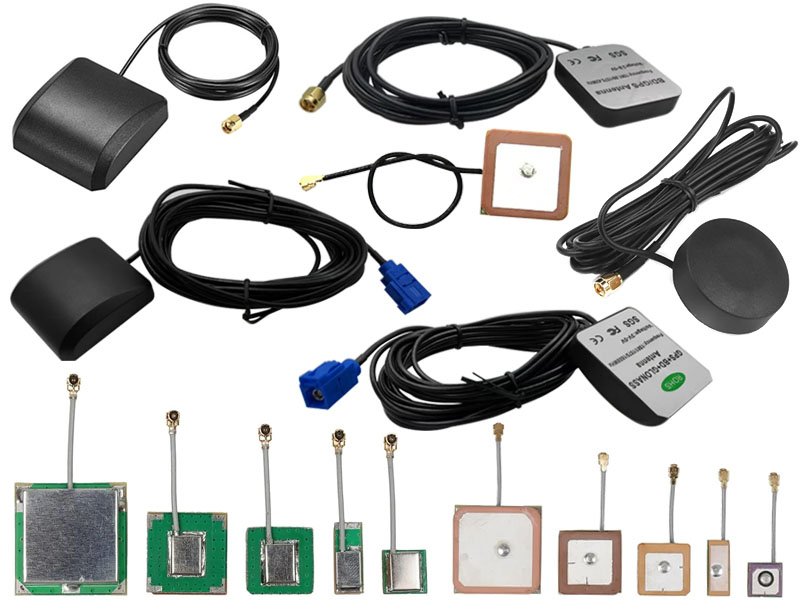-
We’re On Call 24/7 : +8613538296050
-
E-mail : anna@rohoconnector.com
We’re On Call 24/7 : +8613538296050
E-mail : anna@rohoconnector.com
The fundamental split starts with how satellites communicate:
GPS (CDMA): All satellites broadcast on one primary frequency (1575.42 MHz). Unique pseudo-random noise codes (PRN) distinguish each satellite’s signal within this shared 20 MHz bandwidth.
GLONASS (FDMA): Each satellite transmits on a slightly different frequency within the L1 band, calculated as 1602 + 0.5625×k MHz (where *k* is the satellite ID). This spreads signals across 8.3 MHz total bandwidth.
This isn’t just protocol trivia – it dictates how antennas capture and isolate signals.
Here’s where physics meets engineering:
Frequency Coverage & Bandwidth:
A GPS antenna targets a narrow peak at 1575.42 MHz. Optimizing gain here is critical.
A GLONASS antenna must handle a broader sweep (1598.5–1605.5 MHz for k=7 to 14). Bandwidth is king, demanding wider-tuned elements.
Multi-system antennas (GPS/GLONASS/BeiDou) stretch further to cover 1565–1606 MHz, challenging designers to balance gain uniformly.
Interference Resilience:
GLONASS’s FDMA gives it a tactical edge: jamming requires disrupting multiple frequencies, not one. Antennas benefit from inherent resistance to narrowband interference.
GPS antennas rely more on external filtering (e.g., SAW filters) to suppress in-band noise from LTE bands like B13, whose harmonics can desensitize receivers.
Filtering & Component Sensitivity:
Both systems suffer if insertion loss (signal weakening) is high or group delay ripple (signal distortion) exceeds 6ns. SAW filters must walk a tightrope – rejecting out-of-band noise without attenuating desired signals.
GLONASS’s scattered frequencies complicate filter design. DCS1800 band noise can notably degrade its noise figure (NF), demanding high-linearity LNAs.
Specs translate to tangible differences:
Accuracy: GPS (civilian) achieves ~5m; GLONASS trails slightly at ~10m. Military modes narrow both to sub-meter levels38.
Polar Coverage: GLONASS satellites orbit at higher inclinations (64.8° vs GPS’s 55°), enabling better signal reception in Arctic regions.
Signal Strength: GLONASS signals arrive weaker (-161 to -155.2 dBW vs GPS’s ~ -157 dBW), necessitating antennas with higher gain or lower noise figures in marginal environments.

Modern devices rarely choose one system. Tri-band antennas (GPS/GLONASS/BeiDou) leverage combined satellite visibility:
More satellites = faster locks and better urban canyon performance.
Designs like slot-coupled patches on cost-effective FR4 substrates (not brittle ceramics) now cover 1.464–1.647 GHz. Innovations like etched ground plane slots optimize circular polarization across bands.
Key Antenna Traits Compared
| Feature | GPS Antenna | GLONASS Antenna |
|---|---|---|
| Center Freq | 1575.42 MHz | 1602 + k×0.5625 MHz |
| Bandwidth | ~20 MHz (shared CDMA) | ~8.3 MHz (FDMA channels) |
| Key Strength | Mature filtering tech | Native anti-jamming (FDMA) |
| Weakness | Narrowband jamming risk | Wider freq. tuning needed |
| Ideal Use | Global consumer devices | High-latitude/redundant systems |
Standalone GPS or GLONASS antennas are becoming legacy tech. Today’s challenges – urban canyons, jamming threats, and demands for cm-level precision – push us toward multi-constellation receivers. As 5G and IoT explode, antennas blending GPS, GLONASS, Galileo, and BeiDou will dominate, turning signal diversity into reliability.